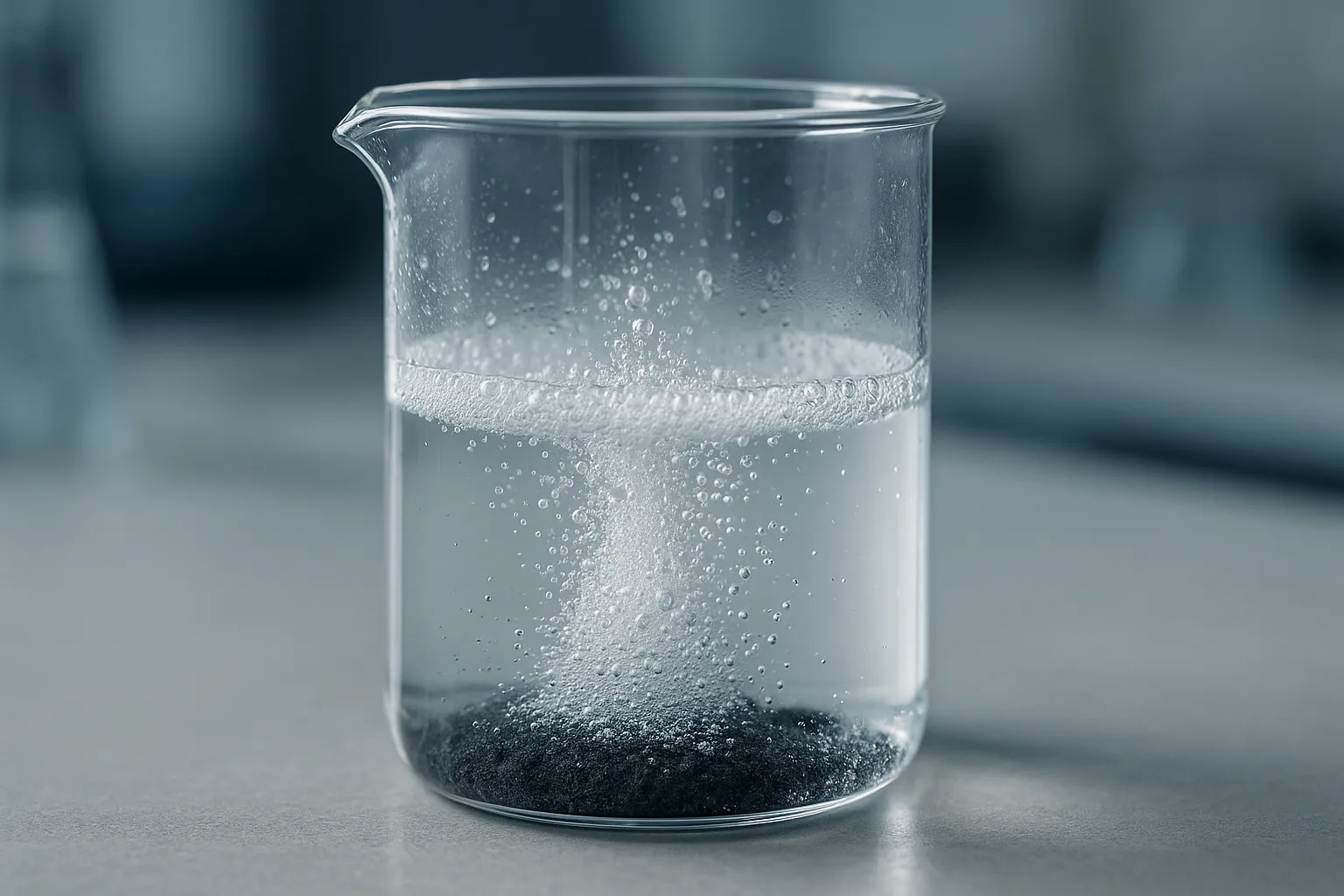Introduction: Why H2O2 Matters
Hydrogen peroxide (H₂O₂) is a well-known industrial chemical used in sectors ranging from paper bleaching to water purification. What makes it chemically unique is its dual role in oxidation-reduction reactions. Central to this behavior is its oxidation number—an abstract concept in chemistry that holds practical significance in real-world applications.
Industries depend on the redox capabilities of H₂O₂ to facilitate cost-effective and environmentally friendly chemical processes. From textile processing to electronics cleaning, understanding how this compound reacts at the molecular level gives manufacturers better control over outcomes and quality.
Chemically speaking, H₂O₂'s versatility hinges on the behavior of the oxygen atoms. Unlike molecular oxygen or water, the oxygen atoms in hydrogen peroxide are in an intermediate oxidation state. This nuanced redox capability is what sets it apart from other oxidizing agents.
Knowing the oxidation number of hydrogen peroxide isn't just a classroom exercise—it translates directly into reaction design, safety protocols, and sourcing standards. For chemical buyers and process engineers, mastering this property can make a critical difference in choosing the right grade and supplier of H₂O₂.
What Is the Oxidation Number of H2O2?
The oxidation number of each oxygen atom in hydrogen peroxide (H₂O₂) is –1. This is distinct from the –2 oxidation state typically seen in water (H₂O) and most oxides. The overall molecule remains neutral, but the unique bonding between the two oxygen atoms—known as a peroxo bond—explains this intermediate oxidation state.
To determine this value, we apply basic rules from redox chemistry: Hydrogen (H) typically has a +1 oxidation number, and the molecule overall is neutral. Given H₂O₂ has two hydrogen atoms contributing +2, the two oxygen atoms must together be –2, giving each an oxidation number of –1.
This –1 state allows H₂O₂ to act both as an oxidizing agent (getting reduced to water, H₂O) and as a reducing agent (getting oxidized to molecular oxygen, O₂). Its ability to straddle these redox roles underlies many of its industrial applications.
Understanding this –1 oxidation number is critical for safe handling, as it affects reactivity under different pH and temperature conditions. It also informs the shelf life and stability of hydrogen peroxide, particularly in concentrated industrial solutions like Hydrogen Peroxide 50%.
Redox Reactions Involving H2O2
Hydrogen peroxide’s redox potential makes it a versatile reagent. It acts as an oxidizing agent in acidic solutions and as a reducing agent in basic conditions. This duality is harnessed in industries to fine-tune chemical outputs, especially in oxidation-sensitive processes.
For instance, in acidic medium:
H2O2→H2O+12O2H_2O_2 \rightarrow H_2O + \frac{1}{2} O_2H2O2→H2O+21O2
This reaction showcases H₂O₂ donating electrons (getting reduced), which is useful in pulp bleaching and disinfection. The controlled release of oxygen supports processes needing oxidation without aggressive reactants like chlorine.
Conversely, in basic medium, it can behave as a reducing agent:
H2O2+O3→O2+H2O+O2H_2O_2 + O_3 \rightarrow O_2 + H_2O + O_2H2O2+O3→O2+H2O+O2
This reaction is beneficial in environmental applications like wastewater treatment, where hydrogen peroxide reduces harmful oxidants or pollutants to harmless products.
According to ScienceDirect, H₂O₂ is also involved in advanced oxidation processes (AOPs), where it reacts with catalysts like Fe²⁺ to generate hydroxyl radicals. These radicals are among the most reactive oxidants, further emphasizing the importance of the –1 oxidation state in facilitating selective reactions.
Industrial Applications Shaped by Oxidation Number
The –1 oxidation state makes hydrogen peroxide ideal for controlled oxidation—a rare and valuable trait in industrial chemistry. In the textile industry, it serves as a gentler bleach that doesn’t damage fabric fibers like chlorine. The –1 oxidation number allows selective bleaching while minimizing fiber degradation.
In the pulp and paper industry, H₂O₂ is used for bleaching wood pulp to produce white paper. Here, its oxidation state enables lignin degradation without harmful byproducts. According to a study by the American Chemical Society, this oxidation behavior is central to sustainable papermaking.
Water treatment facilities use H₂O₂ to decompose organic contaminants. The redox chemistry involved helps convert pollutants into non-toxic forms, aligning with eco-friendly standards. The –1 oxidation number plays a role in modulating the speed and strength of these redox reactions.
In semiconductor and electronics manufacturing, ultra-pure hydrogen peroxide is used for wafer cleaning. The molecule's unique oxidation number supports precise, residue-free oxidation, ensuring high performance. Buyers can explore available industrial grades at Chemtradeasia’s product catalog.
Sourcing High-Quality Hydrogen Peroxide
Given how integral oxidation number is to H₂O₂’s function, it's essential to source the chemical from trusted suppliers. Purity, concentration, and stability are all affected by oxidation potential, especially in high-reactivity environments.
Chemtradeasia offers various concentrations of hydrogen peroxide tailored to specific industrial needs—from 35% cosmetic grades to 50% industrial solutions. All products adhere to international standards for reactivity and storage.
Buyers should always confirm oxidation-related specs before purchase. For instance, materials safety data sheets (MSDS) and technical data sheets (TDS) should indicate the reactivity profile, including behavior under different pH conditions.
To get consultation or quote tailored to your industrial application, you can reach out via Chemtradeasia’s contact page. Their technical team can recommend the right concentration, packaging, and delivery option based on redox usage.
Conclusion: The Oxidation Number’s Commercial Relevance
Understanding the oxidation number of H₂O₂—specifically its –1 state—opens up insights into its dual functionality in redox chemistry. This directly affects industrial applications, from clean oxidation in paper bleaching to safe pollutant breakdown in wastewater systems.
For procurement managers and process engineers, this knowledge helps assess the correct concentration and grade of hydrogen peroxide for their processes. It also underscores the importance of sourcing from reputable suppliers who guarantee quality and reactivity compliance.
Hydrogen peroxide's utility is not just a matter of concentration but of oxidation potential. Choosing the right product involves both chemical understanding and market knowledge. By partnering with reliable chemical suppliers like Chemtradeasia, industries can align operational safety, cost-effectiveness, and sustainability.
To explore more about hydrogen peroxide and its industrial-grade variants, visit Chemtradeasia’s product portal or contact their support team for technical recommendations.

Leave a Comment